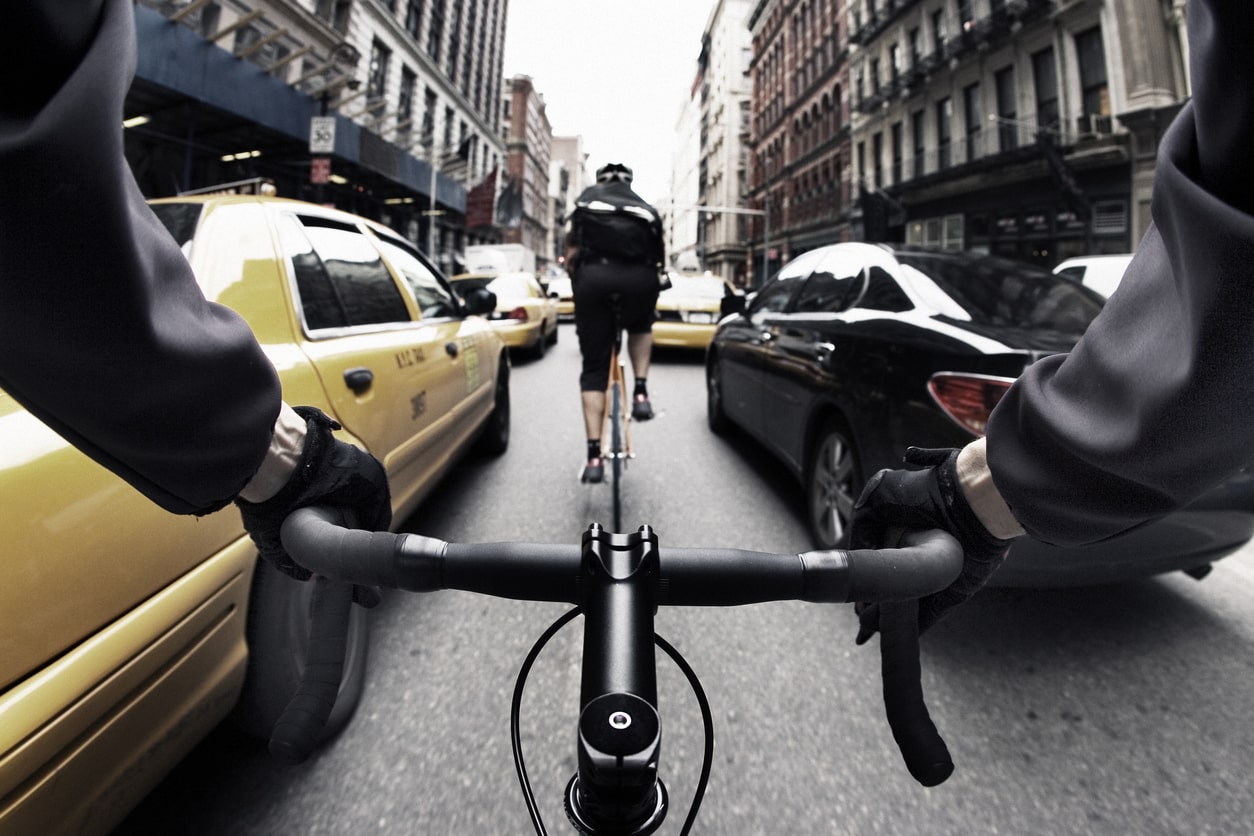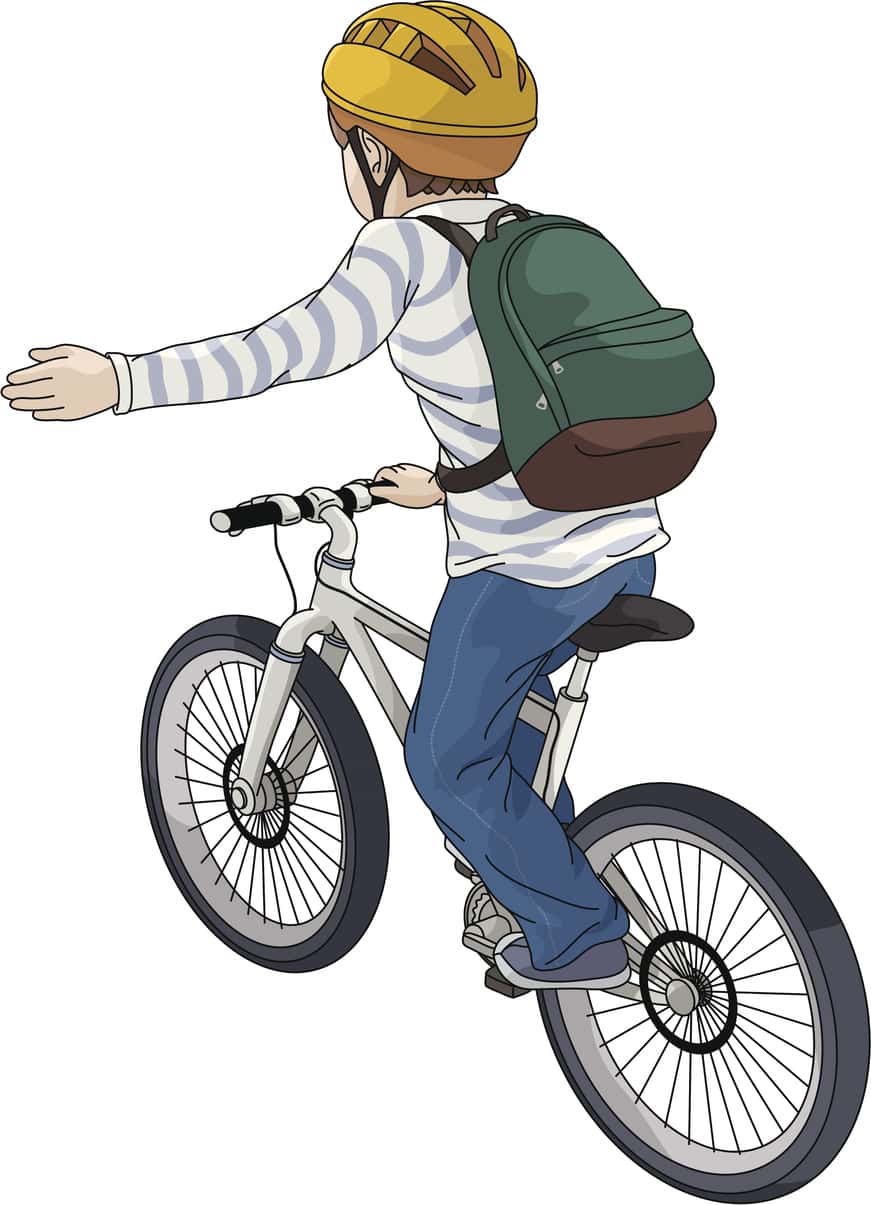
If you’ve ever encountered another motor vehicle driver who doesn’t signal when turning or whose break lights aren’t working, you’ll know how frustrating and dangerous this can be. Experienced drivers should instinctively activate turn signals when making a turn, and any vehicle without working break lights (or signals) is a real hazard on the road. Seeing these lights in advance allow us to prepare for some of the important actions other vehicles are about to take. In their absence, we must react quickly and defensively.
Cyclists don’t have the luxury of flipping a switch to signal a turn or to let others know they are slowing down. Instead, they must use hand signals to alert others on the road about their plans. As a motor vehicle driver, you should become well-acquainted with these signals. Not only will they alert you to actions a cyclist is about to take, but you can also use them in an emergency if your own signals and lights have failed.
Hand Signals
LEFT TURN
-
- If a cyclist extends their left arm horizontally to the side of the bicycle, they are making a left-hand turn.

RIGHT TURN
- When turning right, a cyclist may either extend their left arm out horizontally with their hand and forearm raised upward or, alternatively, extend their right arm our horizontally to the side of the bicycle.

STOPPING
- For sudden stops or when slowing down, cyclists will extend their left arm out horizontally and their hand and forearm downward.

Other Helpful Tips
Observing and understanding hand signals will help you anticipate where a bicycle may be headed, but there other important tips to help you avoid collisions with cyclists.
• Keep a safe distance: Ontario’s Highway Traffic Act requires motor vehicle drivers to give cyclists one metre of space when passing them. Ontario’s coroner found failure by motorists to provide this space was a leading cause of death and serious injury.
• Signal well in advance when making a right turn and prepare to slow down or stop if necessary. Cyclists to your right may be planning to drive straight through an intersection and may not be able to slow down or stop in time if you make a sudden right turn. Check your mirrors for approaching cyclists before you initiate your turn.
• Be sure you have adequate time to make a left turn. Oncoming cyclists can travel deceptively quickly and you may not be able to complete a left turn in time. When in doubt, yield!
• Your need to be vigilant does not end when you park. Always be sure to scan for cyclists and check your mirror before opening a car door. No cyclist wants to accept the “door prize.”
We are both avid cyclists and have participated in the yearly Ride to Conquer Cancer – a two-day cycling event spanning over 200 kilometres throughout Ontario’s picturesque countryside. In our next blog post, we will cover safety tips for motor vehicle drivers who share the road with cyclists, including the basic hand signals used by avid cyclist to communicate with others on the road.
For more information, please contact personal injury lawyers James R. Howie at jrhowie@hshlawyers.com or 416-361-3551 or Adam Wagman at adamwagman@hshlawyers.com or 416-361-0988.







